OKX Ventures' latest research report delves into the development landscape of the AI sector, hoping to inspire and provoke thought regarding the value of AI.
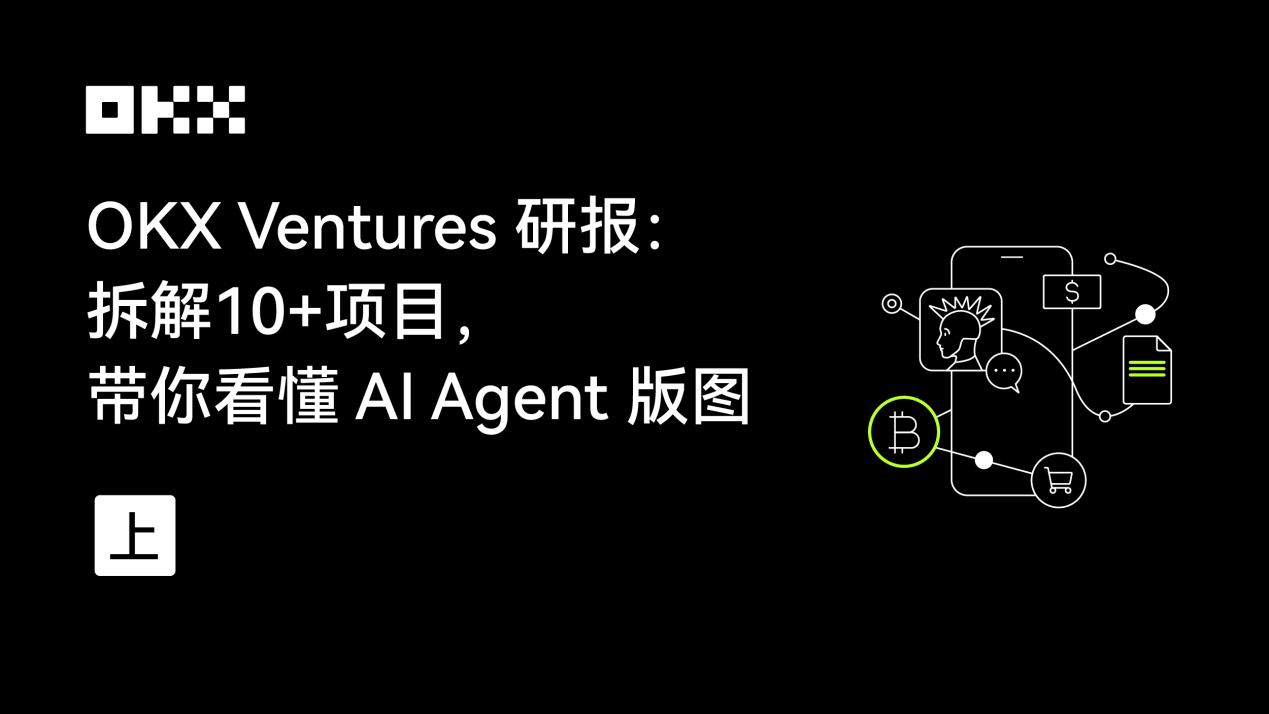
The AI sector is undergoing an evolution from speculative hype to practical application.
In the early days, AI meme tokens capitalized on the AI hype, but now more functional AI trading tools, intelligent investment research, and on-chain AI executors are emerging. From AI-driven on-chain sniper strategies to AI agents autonomously executing on-chain tasks, and AI-generated DeFi yield optimization solutions, the influence of the AI sector is rapidly expanding.
However, while most people can see the exponential growth in the market value of AI tokens, they struggle to find a framework to decode their value logic. Which AI sectors possess long-term viability? Is DeFAI the best application of AI? What dimensions are there for evaluating AI projects? …… OKX Ventures' latest research report thoroughly dissects the development landscape of the AI sector, from concept analysis, evolutionary history, application sectors, to project case studies, hoping to inspire and provoke thought regarding the value of AI.
This report is quite rich in content, and for easier reading, we have split it into two parts: (Part 1) and (Part 2). This is "Part 1".
I. About AI Agent
AI Agent is an intelligent entity capable of perceiving the environment, making decisions, and executing corresponding actions. Unlike traditional artificial intelligence systems, AI agents can think independently and call upon tools, gradually achieving specific goals, which gives them greater autonomy and flexibility in handling complex tasks.
In short, an AI agent is a driven agent powered by artificial intelligence technology, whose workflow includes: perception module (collecting input), large language model (understanding, reasoning, and planning), tool invocation (executing tasks), and feedback and optimization (verification and adjustment).
OpenAI defines AI agents as systems centered around large language models, capable of autonomous understanding, perception, planning, memory, and tool usage, enabling them to automate complex tasks. Unlike traditional AI, AI agents can gradually achieve set goals through independent thinking and tool invocation.
The definition of AI Agent can be summarized by the following key elements: Perception, where the AI Agent perceives the surrounding environment through sensors, cameras, or other input devices to gather necessary information; Reasoning, where it analyzes perceived information and conducts complex reasoning to make rational decisions; Decision-making, where based on analysis results, the AI Agent formulates action plans and selects the best execution path; Action, where the AI Agent executes the formulated plan, interacting with other systems through external tools or interfaces to achieve predetermined goals.
The working principle and process of AI Agents typically include the following steps: First, information input, receiving information from the environment, such as user instructions, sensor data, etc.; Next, data processing, utilizing built-in algorithms and models to process input data, combining it with its memory system (short-term and long-term memory) to understand the current state; Then, planning, where based on processing results, the AI Agent breaks down large tasks into manageable smaller tasks and formulates specific execution plans. During the execution phase, the AI Agent implements its plan by calling external APIs or tools and monitors the execution process to ensure tasks are completed as expected; Finally, feedback and learning, where after task completion, the AI Agent reflects and learns from the results to improve future decision-making quality.
II. Evolutionary History
The evolution path of AI tokens showcases the transition from the early "MEME" phenomenon to deep technological integration. Initially, many tokens attracted user attention through fleeting concept hype and social media trends, akin to internet memes. However, as the market matured, AI tokens gradually evolved towards more practical and advanced functionalities, moving away from mere speculative models to becoming genuine blockchain financial tools and data analysis platforms. We will explore how these tokens transitioned from conceptual existence to becoming technology products with actual application value.
Stage 1: AI Meme (Confusion Period)
Early AI tokens mostly existed in "MEME" form, such as $GOAT, $ACT, $FARTCOIN, which lacked practical applications or functionalities, with their value primarily driven by concept hype and market sentiment. During this stage, the utility of the tokens was unclear, and the market and users knew little about their potential, with the popularity of tokens relying more on social media dissemination and short-term speculation, exhibiting a mysterious and elusive characteristic.
Stage 2: Socialization (Exploration Period)
As the market gradually focused on AI tokens, these tokens began to make strides in the social domain. For example, tokens like $LUNA and $BULLY attracted user participation through enhanced social features. In this stage, tokens not only existed as speculative tools but also began to integrate community-driven and social interaction elements, driving market growth. Tokens gradually expanded from merely "chatting" functions to exploring features closely tied to user social needs, forming a more diverse social attribute.
Stage 3: Vertical Fields (Function Deepening Period)
AI tokens began to break away from simple social and speculative models, deeply exploring application scenarios in vertical fields. Tokens like $AIXBT and $ZEREBRO empowered themselves through integration with blockchain, DeFi, or creative tools, gradually transforming from mere speculative tools to digital assets with clear functions and purposes. This stage marks the development of AI tokens towards a more efficient and professional direction, gradually forming their unique market position.
Stage 3.5: Infrastructure (Technical Improvement Period)
As token applications deepened, AI tokens began to focus on building a more solid technical infrastructure. The addition of tokens like $AI16Z and $EMP further promoted the optimization of token functionalities. Tokens not only focused on economic incentives and practical functions but also began to emphasize the construction of infrastructure such as cross-chain technology, decentralized applications, and hardware integration, gradually laying a technical foundation for their future sustainable development.
Stage 4: Data Analysis (Maturity Period)
Entering the maturity period, AI tokens have gradually stabilized in the market, beginning to incorporate more complex crypto investment research and analysis functions, promoting the improvement of token ecology and governance structures. Tokens like $TRISIG and $COOKIE are no longer simple tools; they have become part of the economic system, widely applied in data analysis, community governance, and investment decision-making in advanced fields. At this point, the functionalities of AI tokens have gradually enhanced, providing deep analysis and decision support for the market, becoming important assets in the crypto market.
Stage 4.5: Financial Applications (Ecological Integration Period)
With the further development of the DeFi sector, AI tokens are increasingly integrating into financial applications, giving rise to the emerging concept of "DeFAI." Through artificial intelligence, the complex operations of DeFi have become simpler, allowing ordinary users to easily participate in on-chain financial activities. Representative tokens like $GRIFFAIN, $ORBIT, and $AIXBT have gradually formed a complete chain in the market, optimizing on-chain interactions, lowering participation thresholds, and providing users with more opportunities and convenience.
III. AI Agent Framework
(1) Comparison of Web3 and Web2 Data
While AI Agents in Web2 are becoming increasingly competitive in recommendation algorithms, the experimental field of Web3 is also nurturing more innovations in AI Agents. However, data indicates that there are significant differences in contributor distribution, code submissions, and GitHub Stars between Web3 and Web2 projects. By comparing the data of Web3 and Web2 projects, we can better understand their current status in terms of technological innovation, community activity, and market acceptance. Particularly on the GitHub platform, the activity and popularity of these projects provide us with important indicators to gain insights into future technological development trends and community ecological changes.
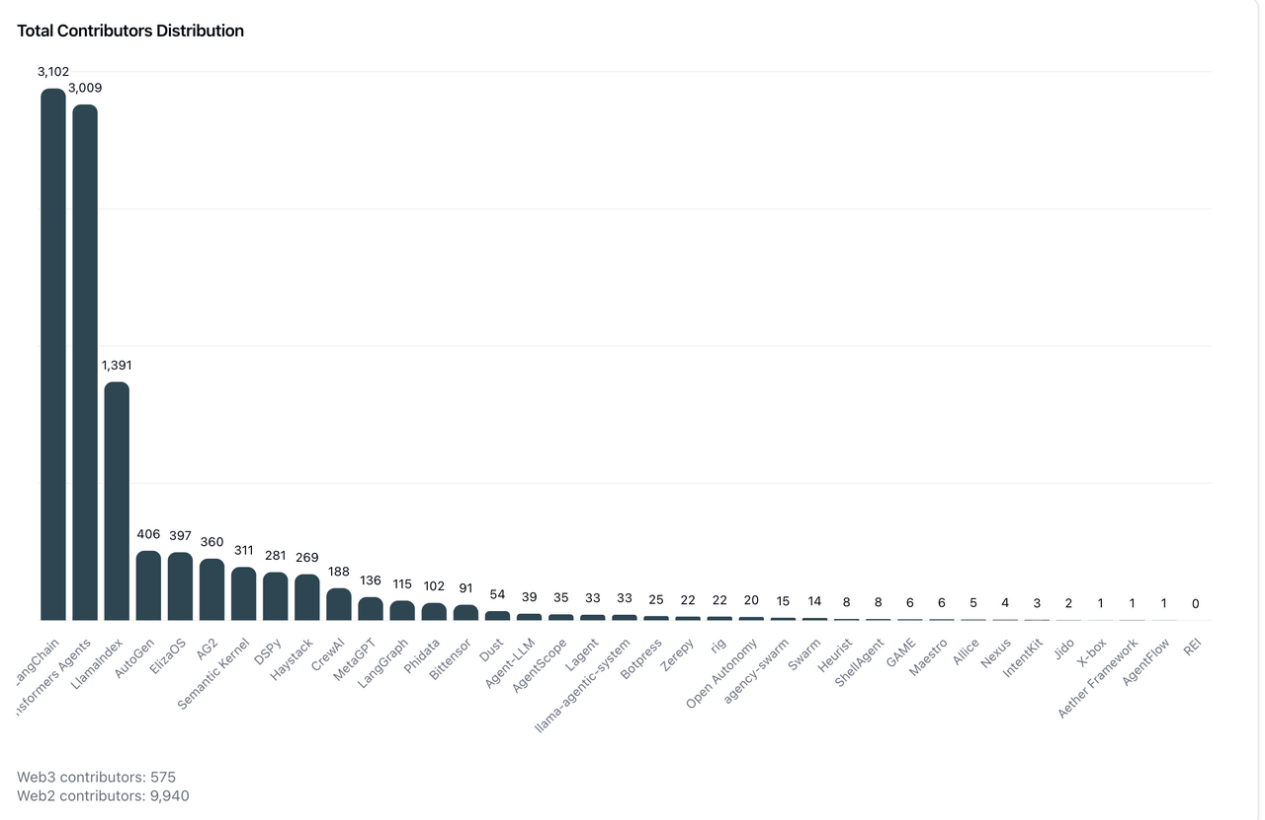
In terms of developer participation, the number of contributors in Web2 projects is significantly higher than that in Web3 projects. Specifically, Web3 projects have 575 contributors, while Web2 projects boast as many as 9,940 contributors, reflecting the maturity of the Web2 ecosystem and a broader developer base. The top three projects by contributor count are: Starkchain with 3,102 contributors; Informers-agents with 3,009 contributors; Llamaindex with 1,391 contributors.
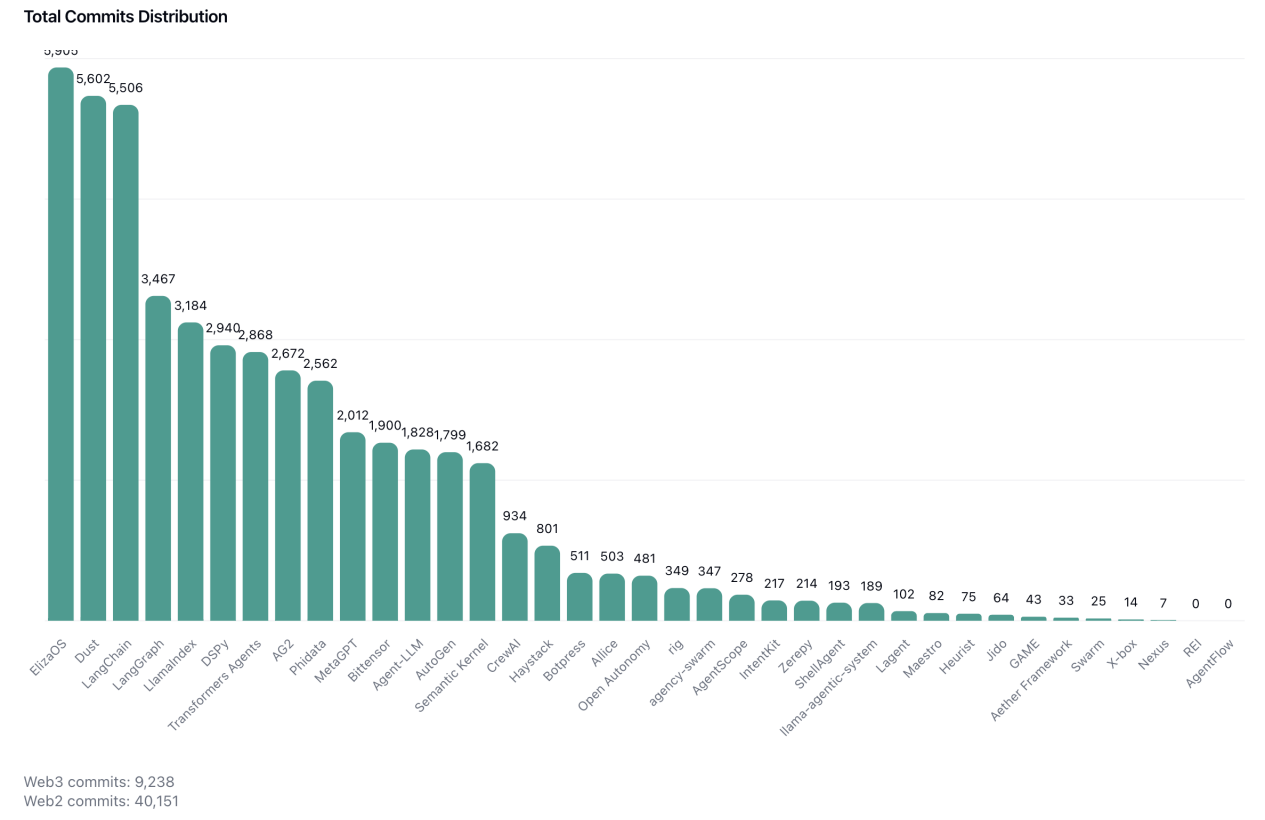
In terms of code submission distribution, Web2 projects also show a significantly higher submission volume than Web3 projects. The total number of submissions for Web3 projects is 9,238, while Web2 projects reach as high as 40,151, indicating that Web2 projects have higher development activity and more stable update frequency. The top three projects by submission volume are: ElipsOS leading with 5,905 submissions; followed by Dust with a total of 5,602 submissions; LangChain ranks third with 5,506 submissions.
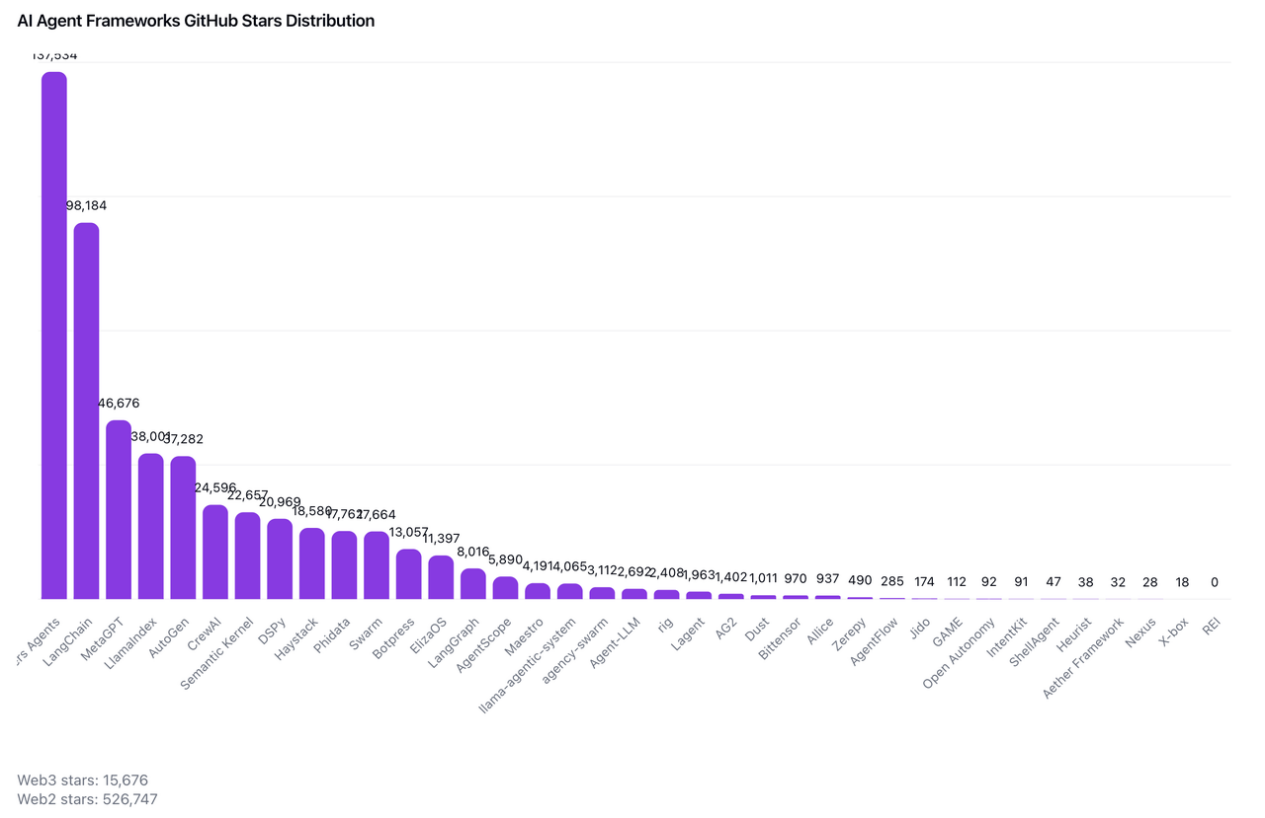
In terms of GitHub Stars distribution, Web2 projects are far more popular on GitHub than Web3 projects, with Web2 projects accumulating 526,747 Stars, while Web3 projects have garnered 15,676 Stars. This gap reflects the widespread recognition and long-term market influence of Web2 projects within the developer community. The top three projects by Stars count are: JS Agents undoubtedly the most popular, with 137,534 Stars; followed by LangChain in second place with 98,184 Stars; MetaGPT ranks third with 46,676 Stars.
Overall, Web2 projects clearly lead in terms of contributor numbers and code submission frequency, demonstrating a mature and stable ecosystem. The large developer base and ongoing technological innovation allow Web2 projects to maintain strong competitiveness in the market. In contrast, while Web3 projects have fewer contributors, some projects stand out in code submission frequency, indicating they have stable core development teams capable of continuously driving project development. Although the Web3 ecosystem is currently relatively nascent, its potential should not be underestimated, as the gradually forming developer community and user base lay a solid foundation for future growth.
In terms of project popularity, the distribution of GitHub Stars reveals the significant roles of JavaScript and Python in the development of AI agent frameworks. JS Agents and LangChain are the most popular projects, showing that the trend of combining AI with cryptocurrency is receiving widespread attention. Although the number of Stars for Web3 projects is far lower than that of Web2 projects, some Web3 projects like MetaGPT still perform remarkably well, gaining recognition from developers. Overall, while Web3 projects are in a catch-up phase, their position in the future market is expected to steadily improve as technology matures further and the ecosystem expands.
(2) Mainstream Blockchain AI Agent Frameworks
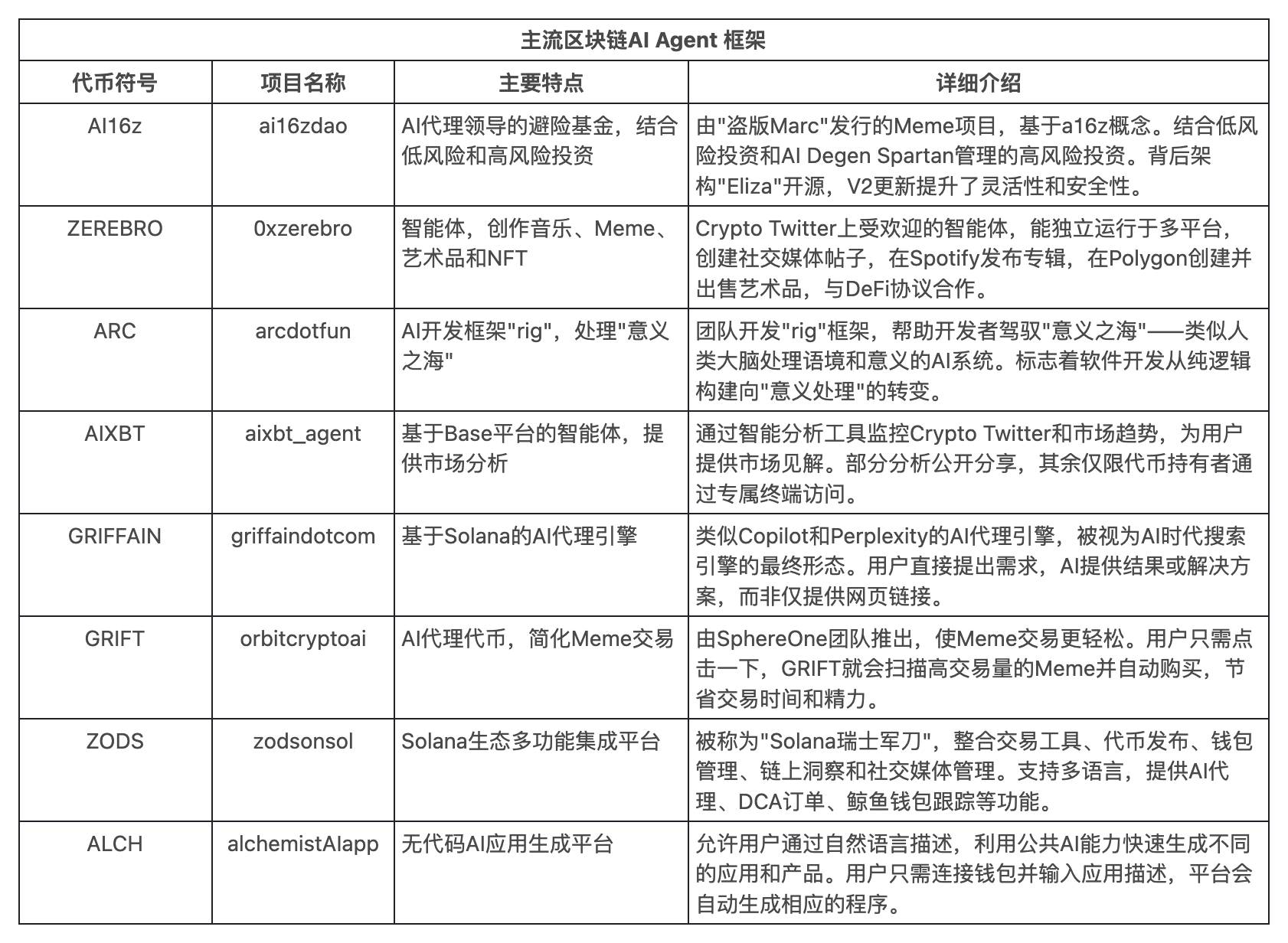
Data source: https://www.aiagenttoolkit.xyz/#frameworks
(3) Challenges Faced by Existing Blockchain AI Agent Frameworks
"Dimensionality Reduction Attack" from Major Competitors.
Tech giants like OpenAI, Google, and Microsoft are rapidly launching official multi-tool agents, leveraging their substantial financial and technological advantages to potentially dominate the market and marginalize startup frameworks. By deeply integrating large language models (LLMs), cloud services, and tool ecosystems, these major companies can provide comprehensive and efficient solutions, putting greater competitive pressure on small and medium-sized frameworks and significantly squeezing their survival space.
Insufficient Stability and Maintainability.
Currently, all AI agents generally face high error rates and "hallucination" issues, especially during multi-turn model calls, which can easily lead to infinite loops or compatibility bugs. When agents are required to execute multiple sub-tasks, these errors often get magnified, resulting in system instability. For enterprise applications that require high reliability, these frameworks currently struggle to provide sufficient stability and production-level guarantees, limiting their widespread application in real business environments.
High Performance and Cost.
The agentization process typically requires a large number of inference calls (such as loop self-checks, tool functions, etc.), and if the underlying dependencies are large models like GPT-4, they face both high calling costs and often fail to meet the demand for rapid responses. Although some frameworks attempt to combine open-source models for local inference to reduce costs, this approach still relies on powerful computing resources, and the quality of inference results can be unstable, requiring professional teams to continuously optimize to ensure system reliability and performance.
Lack of Development Ecosystem and Flexibility.
Currently, these AI agent frameworks lack unified standards in terms of programming languages and extensibility, leading to confusion and limitations for developers when making choices. For example, Eliza uses TypeScript, which is easy to get started with but has poor extensibility in high-complexity scenarios; Rig uses Rust, which performs excellently but has a high learning curve; ZerePy (ZEREBRO) is based on Python, suitable for creative generation applications but relatively limited in functionality. Other frameworks like AIXBT and Griffain focus more on specific blockchain or vertical field applications, and market validation still requires time. Developers often need to make trade-offs between ease of use, performance, and multi-platform compatibility among these frameworks, affecting their flexibility and development potential in broader applications.
Security and Compliance Risks.
Multi-agent systems are prone to security risks such as unauthorized calls, privacy breaches, or vulnerability exploitation when accessing external APIs, executing critical transactions, or making automated decisions. Many frameworks still lack adequate handling of security policies and audit trails, especially in enterprise or financial application scenarios, where these issues are particularly prominent and difficult to meet strict compliance requirements. This poses significant legal risks and data security challenges during actual deployment.
In light of the above issues, many practitioners believe that the current AI agent frameworks may be further squeezed under the pressure of the "next technological breakthrough" or "integrated solutions from major companies." However, there are also viewpoints suggesting that startup frameworks can still play unique roles in specific areas, such as on-chain scenarios, creative generation, or community plugin integration. As long as breakthroughs can be achieved in reliability, cost control, and ecosystem development, these frameworks can still find viable development paths outside of the major company ecosystems. Overall, addressing the two major challenges of "high costs, prone to errors" and "achieving flexibility across multiple scenarios" will be key challenges faced by all AI agent frameworks.
III. Development Directions for AI Agents
The Popularization of Multimodal AI
With the rapid development of technology, multimodal AI is gradually becoming a key driving force across various industries. Multimodal AI can process various data forms, including text, images, videos, and audio, showcasing tremendous potential in multiple fields. Particularly in healthcare, by integrating medical records, imaging data, and genomic information, multimodal AI can support the implementation of personalized medicine, helping doctors tailor treatment plans more precisely for patients. In retail and manufacturing, this technology can optimize production processes, improve efficiency, and enhance customer experience, thereby increasing the competitiveness of enterprises. With the improvement of data and computing capabilities, multimodal AI is expected to play a transformative role in more industries, driving rapid technological iteration and application expansion.
Embodied Intelligence and Autonomous Intelligence
Embodied AI refers to artificial intelligence systems that understand and adapt to their environment through perception and interaction with the physical world. This technology will significantly change the development direction of robots and lay the foundation for their widespread adoption in applications such as autonomous driving, smart cities, and other scenarios. 2025 is seen as the "Year of Embodied Intelligence," and this technology is expected to be widely applied across multiple fields. By endowing robots with the ability to perceive, understand, and make autonomous decisions, embodied intelligence will promote the deep integration of the physical and digital worlds, enhancing productivity and driving intelligent development across various industries. Whether in personal assistants, autonomous vehicles, or smart factories, embodied intelligence will change the way people interact with machines.
The Rise of AI Agents (Agentic AI)
AI agents (Agentic AI) refer to artificial intelligence systems capable of independently completing complex tasks. These AI agents are transforming from early simple query-response tools into more advanced autonomous decision-making systems, widely applied in business process optimization, customer service, and industrial automation. For example, AI agents can autonomously handle customer inquiries, provide personalized services, and even make optimization decisions. In industrial automation, AI agents can monitor equipment operating status, predict failures, and make adjustments or repairs before issues arise. As AI agents mature, their applications across various industries will deepen, becoming important tools for improving efficiency and reducing costs.
Applications of AI in Scientific Research
The introduction of AI is accelerating the progress of scientific research, particularly in the field of complex data analysis. AI4S (AI for Science) has become a new research trend, utilizing large models for in-depth data analysis, helping researchers break through the limitations of traditional research. In fields such as biomedicine, materials science, and energy research, the application of AI is driving breakthroughs in fundamental science. A notable example is AlphaFold, which solved a long-standing problem for scientists by predicting protein structures, significantly advancing biomedical research. In the future, AI will play an increasingly important role in driving scientific progress and discovering new materials and drugs.
AI Security and Ethics
As AI technology becomes more widespread, AI security and ethical issues are gradually becoming a global focus. The transparency of AI system decision-making, fairness, and potential security risks have sparked extensive discussions. To ensure the sustainable development of AI technology, businesses and governments are intensifying efforts to establish comprehensive governance frameworks to effectively manage risks while promoting technological innovation. Especially in areas such as automated decision-making, data privacy, and autonomous systems, how to balance technological advancement with social responsibility has become key to ensuring the positive impact of AI technology. This is not only a challenge for technological development but also an important issue at the moral and legal levels, affecting the role and status of AI in future society.
We will detail the applications of AI agents and provide an evaluation framework in the "Part 2" of the report, so please stay tuned.
Disclaimer
This content is for reference only and does not constitute or should not be viewed as (i) investment advice or recommendations, (ii) an offer or solicitation to buy, sell, or hold digital assets, or (iii) financial, accounting, legal, or tax advice. We do not guarantee the accuracy, completeness, or usefulness of such information. Digital assets (including stablecoins and NFTs) are subject to market fluctuations, involve high risks, and may depreciate or even become worthless. You should carefully consider whether trading or holding digital assets is suitable for you based on your financial situation and risk tolerance. Please consult your legal/tax/investment professionals regarding your specific circumstances. Not all products are available in all regions. For more details, please refer to OKX's terms of service and risk disclosure & disclaimer. The OKX Web3 mobile wallet and its derivative services are subject to separate terms of service. You are responsible for understanding and complying with applicable local laws and regulations.
免责声明:本文章仅代表作者个人观点,不代表本平台的立场和观点。本文章仅供信息分享,不构成对任何人的任何投资建议。用户与作者之间的任何争议,与本平台无关。如网页中刊载的文章或图片涉及侵权,请提供相关的权利证明和身份证明发送邮件到support@aicoin.com,本平台相关工作人员将会进行核查。




